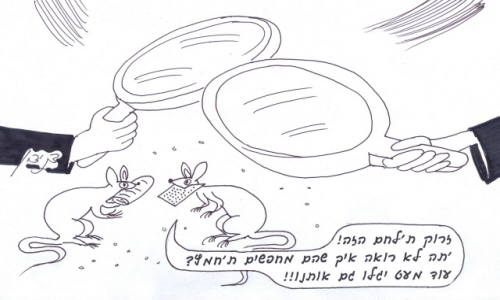
The early sages (Tanaaim) required that one check one’s house for chametz before Passover. Many instructions were given and much discussion was held about the place, the time, and the need for checking. Thus, for example, the sages debated what happens if one has nine bundles of matza and one of chametz (which looks like matza when baked) and a mouse comes and takes something — we know not whether it is from the bundles of matza or of chametz. In this case the sages ruled that one is forbidden to eat the baked good and it is considered chametz. In a case where the mouse took the baked good after it fell from one of the bundles (though we know not which bundle) we follow the majority and consider that it fell from a bundle of matza, and so it is permissible for consumption on Passover.
The scholars also discussed a situation in which there is one bundle of matza and one bundle of chametz in a courtyard shared by two houses. The residents of one house have already checked for chametz and of the other have not. Two mice come along; one takes some matza and the other some chametz, and they each go into a house. It is unknown which mouse took what baked good. The sages ruled that the mouse which took the matza went into the house which had already been checked and the mouse which took the chametz went into the house which had not yet been checked.
(Babylonian Talmud, Tractate Pesachim 9b)
